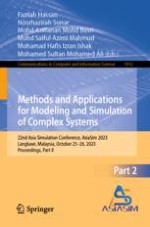2024 | Buch
Methods and Applications for Modeling and Simulation of Complex Systems
22nd Asia Simulation Conference, AsiaSim 2023, Langkawi, Malaysia, October 25–26, 2023, Proceedings, Part II
herausgegeben von: Fazilah Hassan, Noorhazirah Sunar, Mohd Ariffanan Mohd Basri, Mohd Saiful Azimi Mahmud, Mohamad Hafis Izran Ishak, Mohamed Sultan Mohamed Ali
Verlag: Springer Nature Singapore
Buchreihe : Communications in Computer and Information Science
